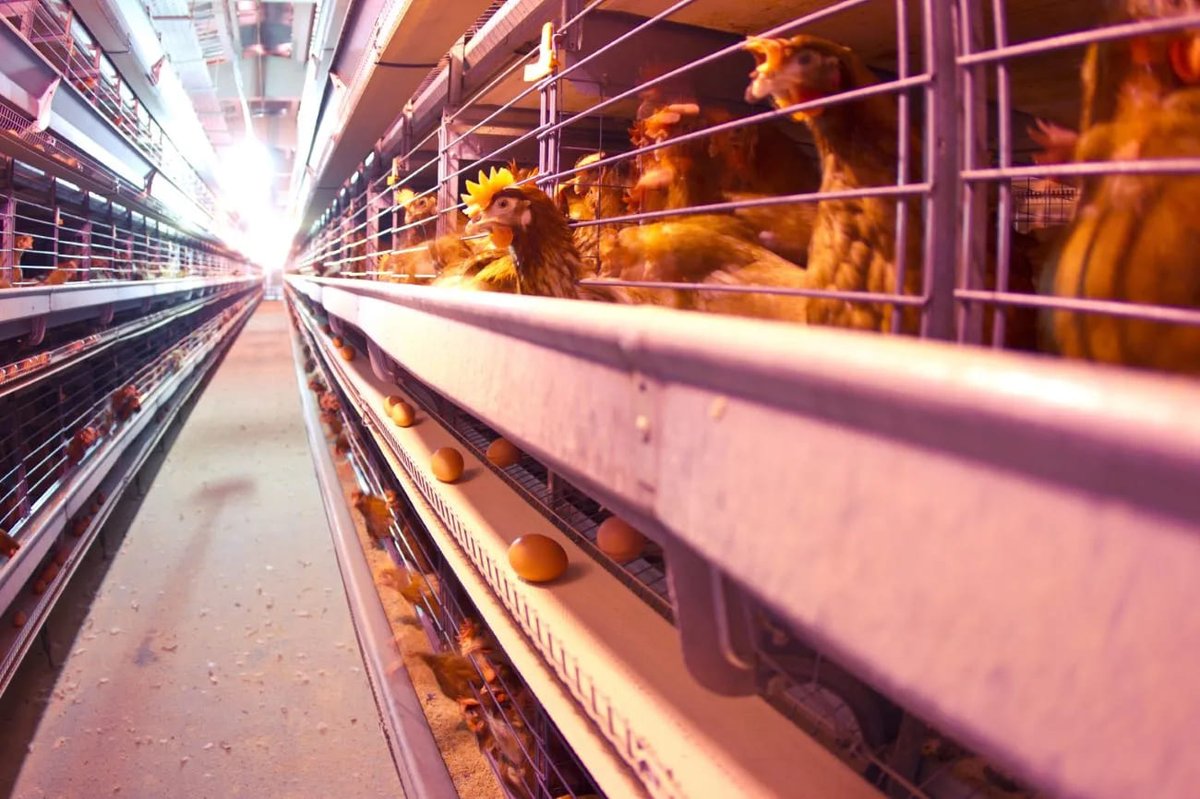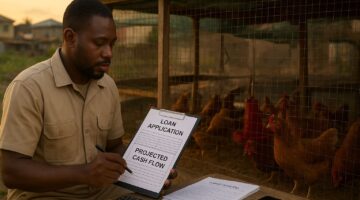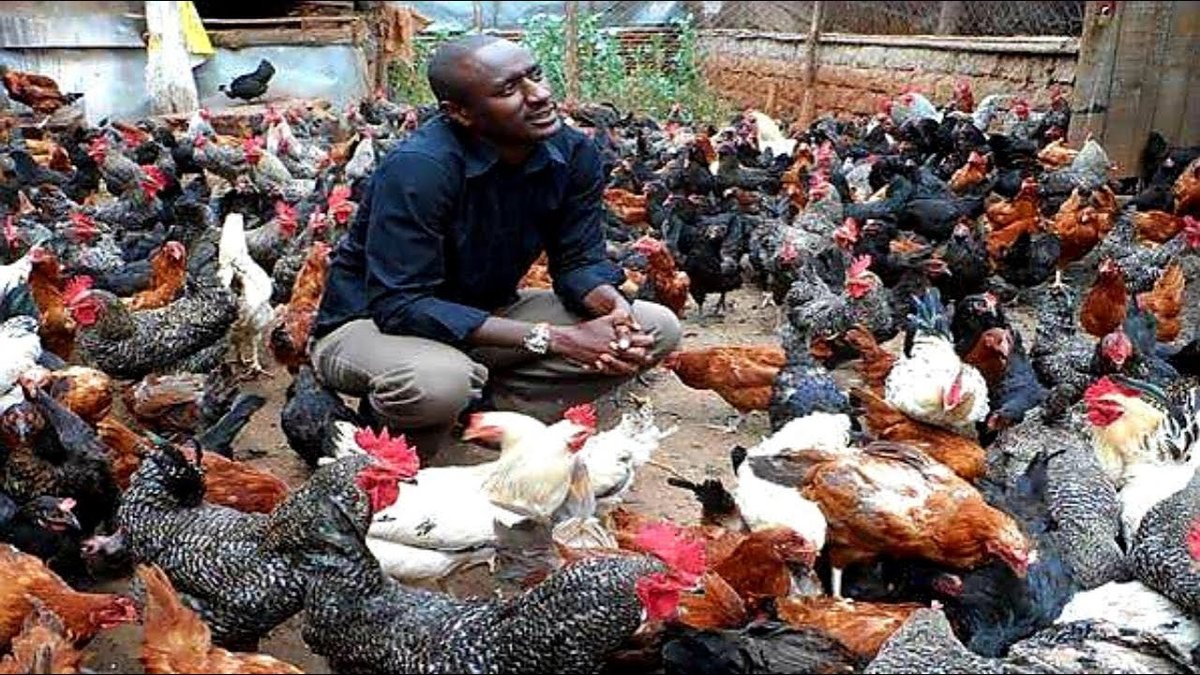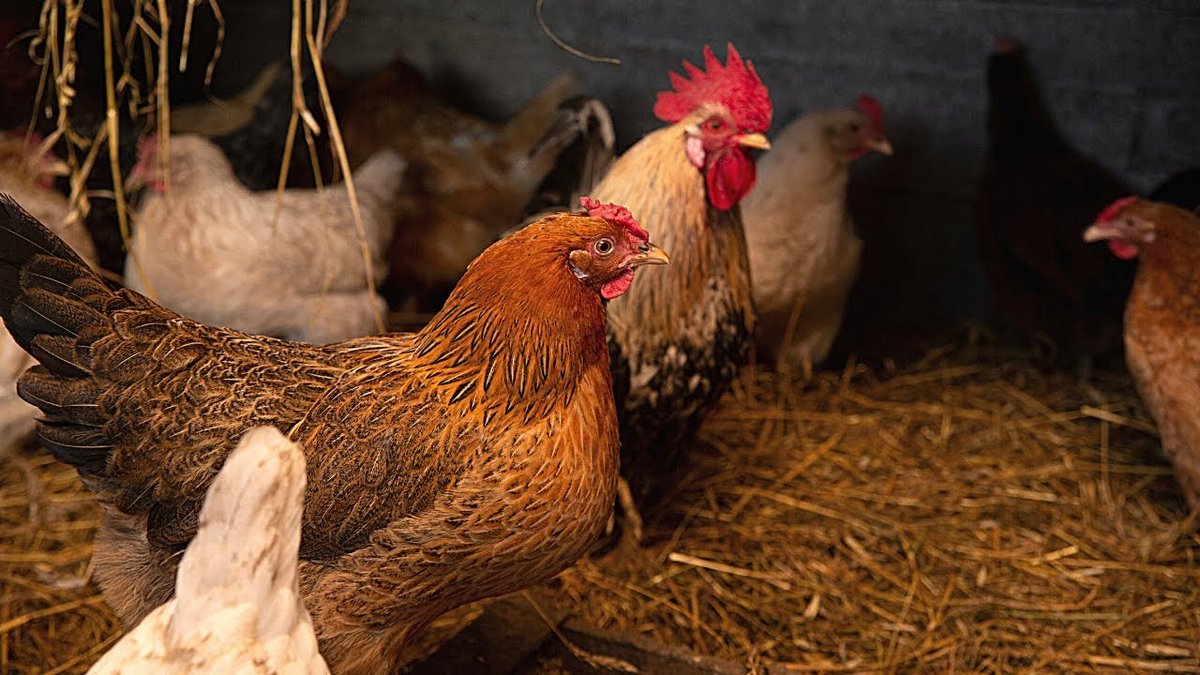Are you thinking about starting a poultry business in Nigeria? That’s a great idea! Poultry farming is a very profitable business, but it requires careful planning, especially when it comes to money. If you’re wondering how much it costs to raise 200 layers in Nigeria, you’ve come to the right place. This comprehensive guide is designed to walk you through every expense and key decision, so you can figure out your potential profit and make a sound business plan.
This article provides a detailed, step-by-step budget for starting with 200 layers. We will delve into the cost of starting a 200-layer farm in Nigeria, answer all your important questions, and provide actionable advice so you can begin your journey with confidence. All prices are estimates for 2025, based on current market trends.
This guide will not only help you budget effectively but also equip you with the practical knowledge needed for poultry farming in Nigeria for beginners. Let’s start by looking at why a 200-layer farm is a smart choice for a new farmer.
The Profitability of 200 Layers in Nigeria
Starting with a flock size of 200 birds is a strategic choice for a new farmer, making it a viable and profitable venture. It’s a number that is large enough to be commercially viable, yet small enough to be managed effectively as you learn the ropes.
Advantages of Starting with 200 Layers
- Lower Startup Capital: Compared to larger-scale operations, a 200-layer farm requires a significantly lower initial investment, reducing your financial risk.
- Ideal for Learning: This flock size allows you to master crucial farming skills, such as biosecurity protocols, feeding schedules, and disease management, before scaling up.
- Consistent Income: Once the hens reach point of lay, they provide a consistent, daily source of income from egg sales, helping you quickly recoup your initial investment.
- High Return on Investment (ROI): With proper management, the profitability of a 200-layer farm is high, offering a solid return that can be reinvested into expanding the business.
How to Maximize Profitability
While the average production rate is a good indicator, your actual profit will depend on how well you manage your business. To maximize your returns, focus on key areas like feed management, disease prevention, and effective marketing.
- Reduce Feed Waste: Use feeders that minimize spillage, and avoid overfilling them. Store poultry feed in a cool, dry place to prevent spoilage and rodent contamination.
- Prevent Disease: A healthy flock is a productive one. Implement a strict biosecurity program to keep your birds safe from common illnesses, and stick to a regular vaccination schedule.
- Strategic Marketing: Don’t just wait for buyers; actively seek out markets. Explore selling directly to consumers, local restaurants, or retailers. Building a strong customer base can secure a consistent income stream.
This strategic approach to your small-scale operation will lay the groundwork for long-term success. Now that you understand the “why,” let’s dive into the “how” with a comprehensive budget for your poultry business in Nigeria.
A Detailed Budget for 200 Layers in Nigeria
This section is the most critical part of your 200 layers farm business plan. We have divided the expenses into two main categories: one-time capital investments and recurring operational costs. The currency is the Nigerian Naira (₦). Let’s break down the costs.
A. Capital Expenses (One-Time Investment)
These are the foundational costs you will incur to get your farm running. The initial investment is what you’ll need to get started.
Poultry Housing (Coop Construction)
A safe, well-ventilated house is non-negotiable. A size of approximately 12ft×20ft is suitable for 200 layers, providing adequate space. The construction can use various materials, with costs varying accordingly. To figure out your exact needs, consider our guide on how big a chicken coop should be.
- Wood and Zinc: A more affordable option, but less durable and may require more maintenance.
- Concrete Blocks: A more expensive but highly durable, secure, and easier-to-clean option.
- Essential Features: Ensure the house has good cross-ventilation, and protection from predators and rodents. Estimated Cost: ₦250,000 – ₦450,000.
Housing System (Battery Cages or Deep Litter)
- Battery Cages: Preferred for layers as they simplify egg collection, reduce breakage, and minimize hen-to-hen disease transmission. A single cage holding 96-120 birds will cost around ₦120,000. You will need two cages to house 200 birds.
- Deep Litter System: A more traditional and cost-effective option, where the floor is covered in wood shavings. While cheaper to set up, it requires more labor for cleaning and disease management and can contribute to respiratory issues if not managed correctly. Estimated Cost (Battery Cages): ₦240,000 – ₦280,000.
Feeders and Drinkers
Ensure you have enough equipment to prevent competition among the birds. Consider both manual and automatic options.
- Type: You can choose between plastic or galvanized metal feeders. Plastic is cheaper, but metal is more durable. For water, nipple drinkers in a battery cage system are most efficient and sanitary. Estimated Cost: ₦40,000 – ₦60,000 for a set of quality plastic or galvanized metal equipment.
Brooding Equipment
Essential for the first few weeks when day-old chicks need consistent heat.
- Items Needed: Heating lamp (with a bulb), charcoal stove (with a guard), or a gas brooder. Ensure a constant power source or fuel supply. A thermometer is crucial for monitoring temperature. Estimated Cost: ₦15,000 – ₦25,000.
Cost of Birds
This is a major part of your initial investment and a key decision point.
- Day-Old Chicks (DOC): Requires significant care for about 4-5 months before they start laying. A popular and high-performing breed is Isa Brown.
- Cost: ₦1,000 – ₦1,500 per chick. For 200 chicks: ₦200,000 – ₦300,000.
- Point-of-Lay (POL) Hens: These are 16-18 week old hens, ready to begin laying within a few weeks. They are more expensive but offer a much faster return on investment and bypass the high-risk brooding stage.
- Cost: ₦4,000 – ₦5,000 per hen. For 200 hens: ₦800,000 – ₦1,000,000.
Total Estimated Capital Cost (with Day-Old Chicks): Approximately ₦745,000 – ₦1,115,000. This amount can be lower if you opt for a deep litter system. This breakdown provides the total cost of starting a 200-layer farm in Nigeria.
B. Operational Expenses (Recurring Costs)
These are the ongoing costs that keep your farm running. The largest of these, and a major factor in how much it costs to raise 200 layers in Nigeria, is feed.
Feeding Costs (From Chick to Layer)
- Chick Mash (0-8 weeks): Approximately 2kg per chick. Total of 400kg, or 16 bags (25kg per bag).
- Cost: ₦18,000 per bag × 16 bags = ₦288,000.
- Growers Mash (9-18 weeks): Approximately 750kg for the flock, or 30 bags.
- Cost: ₦17,000 per bag × 30 bags = ₦510,000.
- Layers Mash (18+ weeks): Once laying, a 200-bird flock will consume about one 25kg bag per day.
- Weekly Cost: 7 bags × ₦16,500 = ₦115,500.
- Note on Feed: Popular and reliable feed brands in Nigeria include Animal Care, Top Feeds, and Chikun Feeds. Choosing a quality brand is crucial for bird health and egg production.
Vaccination and Medication
A strict vaccination schedule is essential to prevent diseases. Common diseases in Nigeria include Newcastle Disease, Gumboro, and Coccidiosis.
- Estimated Cost (for the first 20 weeks): ₦25,000 – ₦40,000. This includes all necessary vaccines, vitamins, and dewormers. It’s crucial to consult a vet to create a proper vaccination program for your farm.
Miscellaneous Costs
- Water and Electricity/Fuel: For brooding and lighting in the coop.
- Labor: If you hire help. A small farm like this can be managed by one person, but labor is a key consideration for expansion.
- Transportation: For buying feed and taking eggs to the local market.
- Estimated Monthly Budget: ₦20,000 – ₦30,000.
Contingency Fund
Always budget for unexpected costs, such as sudden price increases, medical emergencies, or infrastructure repairs. One thing to keep in mind is to set aside 10−15% of your total budget.
Understanding these costs is the first step toward building a resilient business. Next, let’s explore the hands-on steps of raising your flock to ensure you get the most out of your investment.
An Actionable Guide to Raising Your 200 Layers
Step 1: Preparing Your Poultry House and Brooder
Before chicks arrive, thoroughly clean and disinfect the coop. Ensure the area is completely dry. Set up the brooding area with a heating lamp or charcoal stove. Use a brooder guard (a circular wall of cardboard) to keep the day-old chicks close to the heat. Ensure the temperature is correct (32−35∘C or 90−95∘F) for the first week. Lay clean wood shavings on the floor and set up feeders and drinkers with fresh water.
Step 2: Brooding and Rearing (0 to 8 Weeks)
Upon arrival, give the day-old chicks water mixed with anti-stress vitamins. Maintain the heat source 24/7 for the first few weeks, gradually reducing the temperature by about 5∘F each week. Feed them Chick Mash and ensure a constant supply of clean, fresh water. Monitor for signs of discomfort; if chicks are huddled, they are cold. If they are spread out and panting, it’s too hot.
Step 3: The Grower Stage (9 to 18 Weeks)
At this point, your birds are growing larger and can be moved from the brooder to the main pen or cages. Switch their feed from Chick Mash to Growers Mash. Monitor them daily for signs of sickness, such as reduced appetite, ruffled feathers, or watery droppings. This is also the stage where you should begin culling any birds that are not developing properly.
Step 4: Managing Your Flock for Egg Production
Around 18-22 weeks, your point-of-lay hens will start laying their first eggs! Switch their feed to Layers Mash, which contains the high-calcium content needed for strong eggshells. Collect eggs multiple times a day to keep them clean and reduce breakage. Maintain excellent hygiene in the coop and practice strict biosecurity to prevent disease outbreaks. Keep detailed records of daily egg production to track flock size performance.
Mastering these steps is key to ensuring a healthy and productive flock. With a little diligence, you’ll soon be moving from the farm to the market, which brings us to the most important part: your profits!
Profitability and Return on Investment (ROI)
This is the exciting part! A common question I get is, “How much profit can I make?” To figure out your potential profit, let’s break down the numbers for the profitability of a 200-layer farm in Nigeria.
- Average Production: A healthy flock of 200 layers should achieve an 80% production rate.
- Daily Egg Production: 200 layers×0.80=160 eggs per day.
- Weekly Revenue:
- Total Eggs Per Week: 160 eggs/day×7 days=1,120 eggs per week.
- 1,120 eggs is approximately 37 crates (at 30 eggs per crate).
- Current Price of a Crate: Between ₦3,500 and ₦4,500. Using an average of ₦4,000.
- Potential Weekly Revenue: 37 crates×₦4,000=₦148,000.
- Weekly Profit:
- Subtract your main operational cost, which is Layers Mash.
- Weekly Feed Cost: ₦115,500.
- Potential Weekly Profit: ₦148,000 (Revenue) – ₦115,500 (Feed) = ₦32,500.
Factors That Affect Profitability
- Mortality Rate: A healthy flock should have a very low mortality rate. Losing birds to sickness or predators will directly impact your profit. A robust biosecurity plan is your best defense.
- Feed Price Fluctuations: Feed is the single largest cost. Changes in its price will directly affect your profit margin, so it’s wise to buy in bulk when prices are favorable.
- Egg Market Prices: The price of a crate of eggs can fluctuate based on the season and demand. Monitor local market trends to determine the best time to sell.
- Selling Spent Layers: After about 72-78 weeks, egg production will drop. You can sell these “spent layers” for additional income, which can be a valuable part of your total revenue.
Marketing Your Eggs for Maximum Profit
Once your hens are laying, you need a plan to sell their eggs. Here are some effective strategies to consider for your 200 layers farm business plan:
- Direct Sales to Consumers: Sell directly from your farm gate, or deliver to a network of customers in your local community. This cuts out the middleman and gives you the highest profit margin.
- Retail Partnerships: Approach local supermarkets, grocery stores, and small retailers. They require a consistent supply and can be reliable partners for bulk sales.
- Restaurants and Hotels: Many hotels and restaurants are willing to pay a premium for fresh, high-quality eggs. This can be a very lucrative channel.
- Online Marketing: Use social media platforms like Facebook, WhatsApp, and Instagram to create a brand, showcase your fresh eggs, and take orders for delivery.
Sample Financial Projections
| Period | Total Revenue (₦) | Total Costs (₦) | Net Profit (₦) |
|---|---|---|---|
| First 20 weeks | ₦0 | ₦848,000 | -₦848,000 |
| Month 1 (Laying) | ₦592,000 | ₦462,000 | ₦130,000 |
| Month 2 (Laying) | ₦592,000 | ₦462,000 | ₦130,000 |
| Month 3 (Laying) | ₦592,000 | ₦462,000 | ₦130,000 |
| Total after 6 months | ₦1,776,000 | ₦2,234,000 | -₦458,000 |
| Total after 1 year | ₦5,920,000 | ₦5,544,000 | ₦376,000 |
Note: This projection is an estimate and assumes a stable production rate and feed cost.
Profitability is within reach, but it requires diligent tracking and a good business sense. Next, let’s answer some of the most common questions new poultry farmers have.
Frequently Asked Questions (FAQ) about Starting a Layer Farm
Q1: How many bags of feed do 200 layers consume before laying?
From day-old to the point of lay (about 18 weeks), 200 birds will consume approximately 46 bags of feed (16 bags of Chick Mash and 30 bags of Growers Mash). This is a core part of the cost to raise 200 layers in Nigeria.
Q2: What is the best layer breed for egg production in Nigeria?
Isa Brown and Lohmann Brown are excellent and very popular choices for beginners due to their high egg production and hardiness.
Q3: How much space do I need for 200 chickens?
A minimum of 240 square feet is recommended. A coop that is 12 feet by 20 feet is a good size for 200 layers, providing enough room for them to be comfortable.
Q4: Can I start a poultry farm in a residential area in Nigeria?
This depends on your state and local government rules. Many residential areas have regulations against poultry farms due to the potential for odor and noise. Always check with your local authorities first.
Q5: What licenses or permits do I need to start a poultry farm?
What you’ll need to get started is to register your business name with the Corporate Affairs Commission (CAC). It is also highly recommended to join the Poultry Association of Nigeria (PAN), which provides advocacy, training, and resources to farmers.
Q6: What are the most common diseases in Nigerian poultry farms?
The most common diseases are viral (Newcastle Disease, Gumboro), bacterial (Fowl Cholera, Salmonellosis), and parasitic (Coccidiosis). These can be effectively managed with a strict biosecurity plan, proper vaccination, and prompt veterinary care.
Answering these questions beforehand can save you from a lot of headaches down the line. Finally, let’s wrap everything up with some final words of encouragement.
Conclusion
Starting a poultry business is a significant step, and the initial cost of starting a 200-layer farm in Nigeria is substantial. However, with careful planning, good management, and a solid 200 layers farm business plan, it can be a very rewarding and profitable business. This comprehensive guide has given you a detailed and realistic look at all the expenses and considerations you need to expect.
Your journey to becoming a successful poultry farmer starts with knowledge and a clear plan. By using this guide, you are already on the right track. Are you ready to start your farm? If you have any questions about how much it costs to raise 200 layers in Nigeria, leave a comment below. I’ll do my best to answer every one!

Oladepo Babatunde is the founder of ChickenStarter.com. He is a backyard chicken keeper and educator who specializes in helping beginners raise healthy flocks, particularly in warm climates. His expertise comes from years of hands-on experience building coops, treating common chicken ailments, and solving flock management issues. His own happy hens are a testament to his methods, laying 25-30 eggs weekly.



